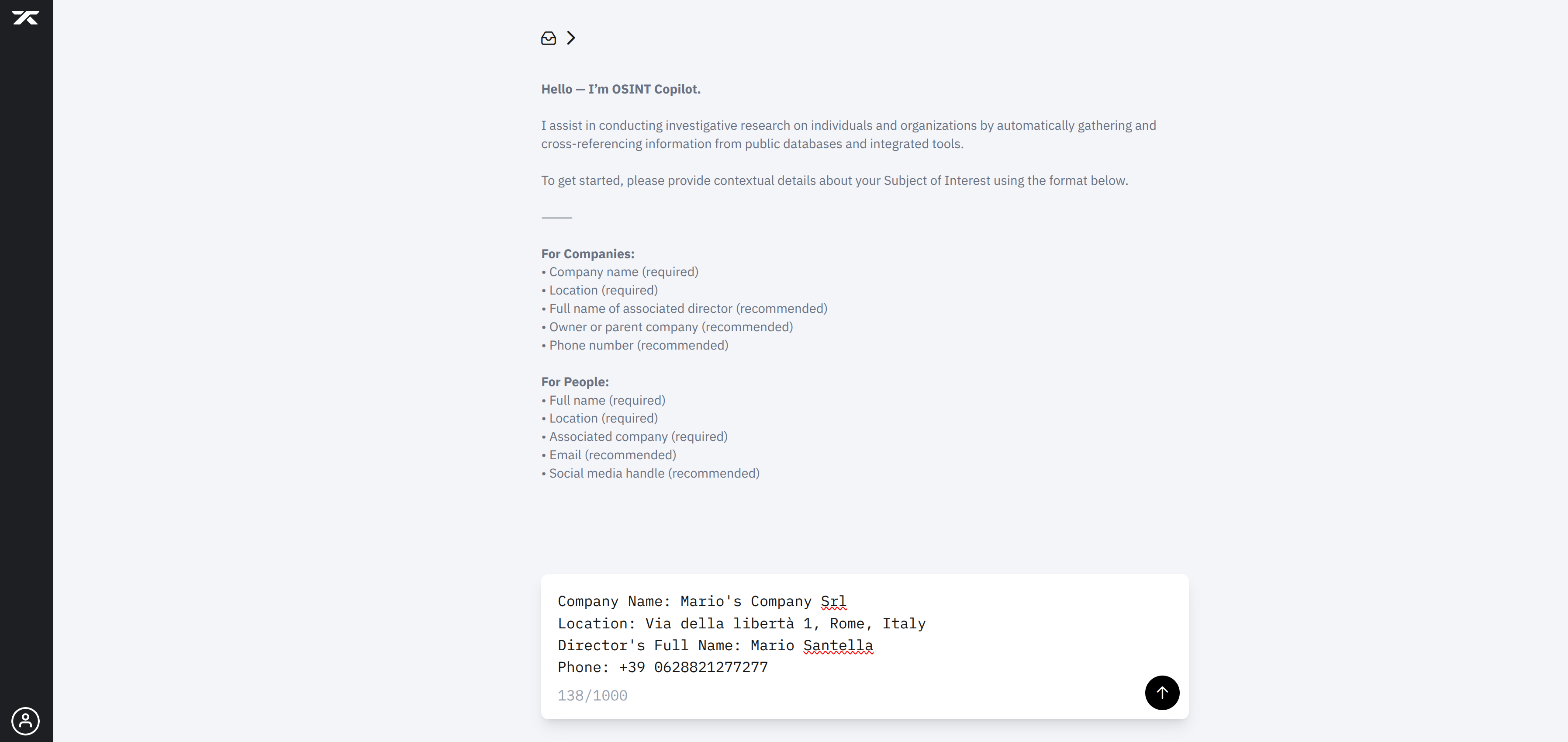You need to assess an Italian company — fast.
Here’s the workflow: start with Tesari AI (paid), then layer free, public checks. Total time: ~10 minutes. All open source.
Step 0: Tesari AI — your starting point
Enter the company info like this:

Tesari will return a very long report:
- Legal structure (Registro Imprese)
- PEC, headquarters, administrators
- Offshore links, past mergers/acquisitions
- Sanctions or legal proceedings (if publicly reported)
- National media coverage (e.g., La Repubblica, Il Sole 24 Ore)
- Known domains and corporate network

This isn’t the full picture — but it’s the map. While your job is running on Tesari, you can proceed with the following steps…
1. WHOIS + reverse WHOIS
In Italy and for .it domains the way to go is: whois.nic.it (registrant info is public by law).
Got a name/surname? Run a reverse lookup:
- ViewDNS.info
- Or: “Name Surname” site:whois.domaintools.com

If the same person registered blockchain-italia-example.io, ai-consulting-2024-example.com, and your target — that’s a pattern, not a coincidence. It’s up to you.
2. Legal address → Google Maps + Street View
Is it a business center, a coworking space, or a residential flat?
Also: check Google Maps reviews.
Even B2B companies get reviews:
- “Contracted them for service X — never delivered.”
- “Great support during implementation.”
Look for verified reviews, recurring themes, and whether they respond professionally. You can find many signals in Google reviews.
For this purpose, also check:
- Trustpilot
- ScamAdviser (for domain + review cross-check)
- Industry-specific forums (e.g., Server Fault for tech vendors) – only if you have extra time.
3. Financials — no “visura” needed
ufficiocamerale.it shows, for free:
- Revenue
- Net profit
- Employee count
- ATECO code
If they claim “enterprise scale” but report €80k revenue and 3 employees, that’s useful context.
4. Find PDFs everywhere (not just their site)
Use these dorks:
"Company Name" filetype:pdf
"CEO Name" filetype:pdf
"Founder Surname" filetype:pdf
site:slideshare.net "Company Name"
site:company.it filetype:pdfPeople present at external events, conferences, university talks. Those decks often leak:
- Real tech stack
- Actual clients
- Internal org structure
And they’re public.
5. LinkedIn: Company Page → People tab
Don’t just scroll posts. Go to Company Page → People.
Filter by “Current employees.”
Compare:
- How many actually list the company?
- Are key roles (CTO, CISO, Head of Ops) filled?
- Do profiles match the narrative (e.g., “ex-Microsoft AI team” → check timeline)?
In small firms, this tab is more honest than the “About” section.
Also: scroll recent posts. The same 3–4 names liking everything? Those are your real stakeholders.
I know a lot of other tool to investigate companies (check out The OSINT Rack for more) but we’re handling with a 10 minute task, so we will skip that part and keep moving on with the next step.
That’s it.
Today AI tools like Tesari AI can boost this activity, and give the starting point, a decent good one; the other steps enrich the report and are easily approachable also for non-OSINT people.
The rest is on you.